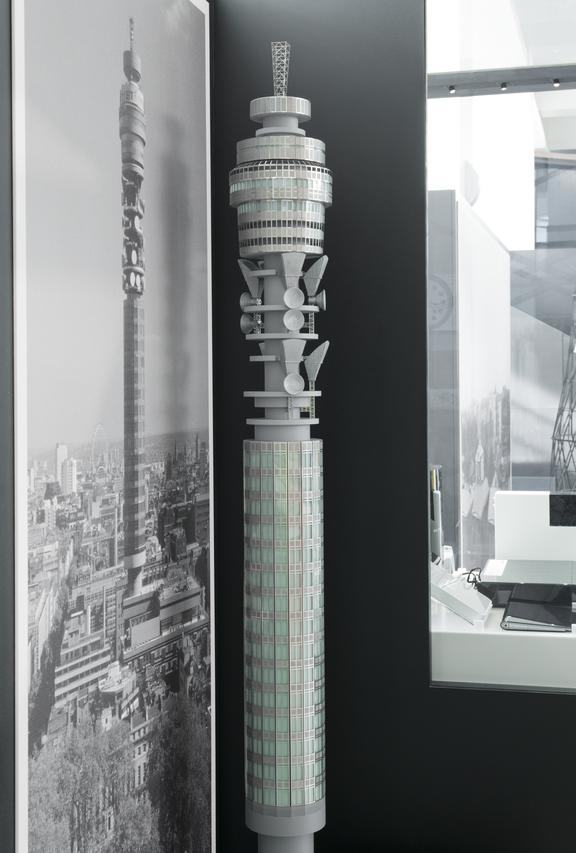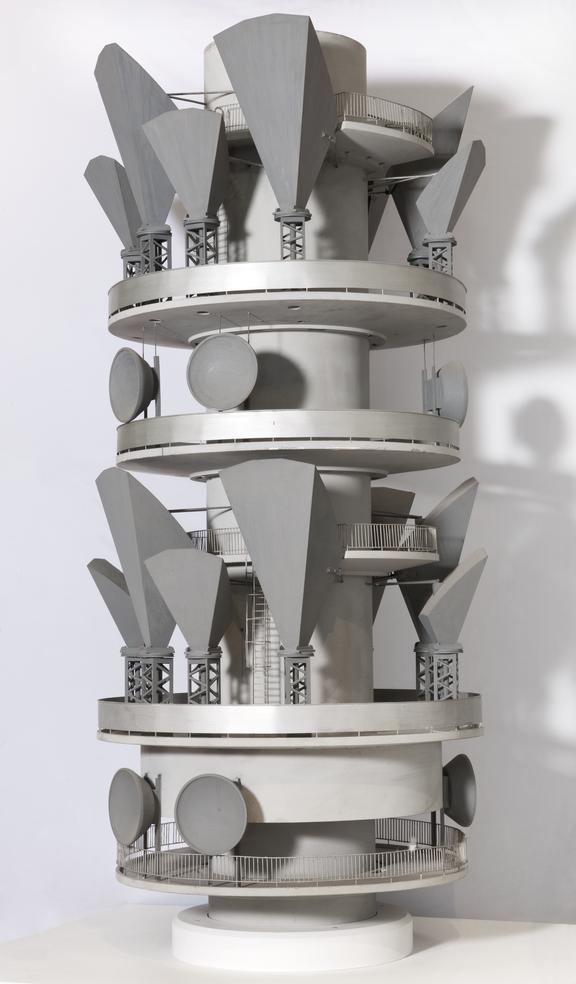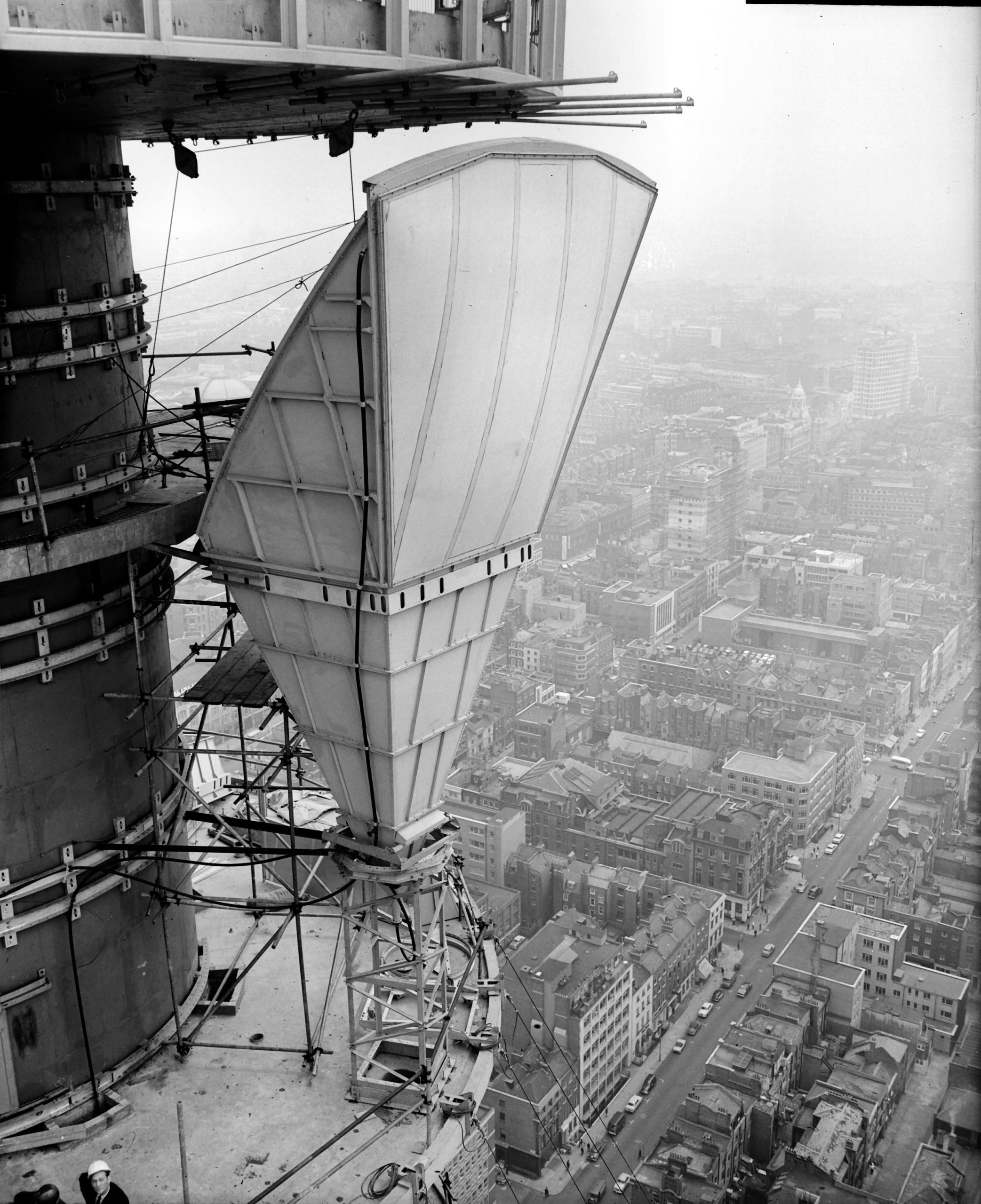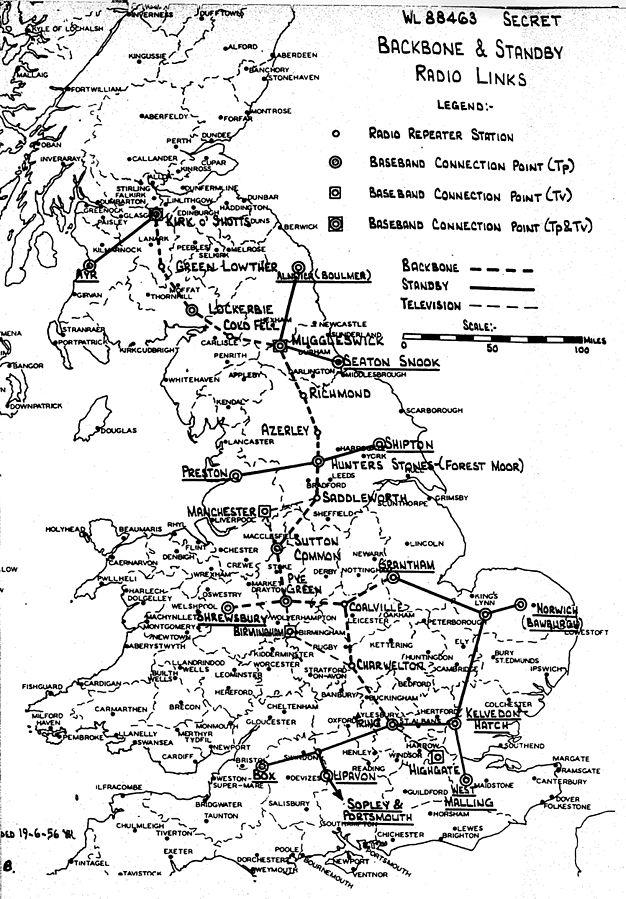
The BT Tower (previously known as the GPO Tower and the Post Office Tower), is an iconic and widely recognised communications tower standing at 189 metres tall including aerial rigging. It was opened by Prime Minister Harold Wilson on 8 October 1965 and officially opened to the general public in May 1966 by Postmaster General Tony Benn.
The tower once had a revolving restaurant and cocktail bar called the ‘Top of the Tower’, where visitors received a certificate as proof of their visit. The tower also had a shop where souvenir models could be bought. The restaurant and shop were both open to the public until 1981 when public access to the building was restricted for security reasons.
When it opened in 1965, the tower was the tallest building in the UK and it remained the tallest building in London until 1980 when the Natwest Tower was built. It is an iconic building and is still widely visible throughout London.
Nonetheless, that BT Tower was once a classified location covered by the Official Secrets Act and so was not included on Ordnance Survey maps.
It was not until February 1993 when Labour MP Kate Hoey used parliamentary privilege to “reveal” the address and existence of the BT Tower, in part to show the ridiculousness of “seemingly trivial information that remains officially secret.”
But why was the BT Tower a classified location in the first place? This is where a connection with microwave ovens comes into play.
Microwave communications

The concept of using a point-to-point microwave radio link network to increase telecommunications capacity in the UK began in the 1950s, first by the General Post Office (GPO) and later by its successor BT plc.
Between the late 1950s and the 1980s, tall line-of-sight towers throughout the UK used microwave radio signals to relay telephone calls, television signals, and military and civilian data.
So-called ‘microwave horns’ (see below) were fitted to a network of tall concrete towers, including the BT Tower in London, and used to relay directional signals from one tower to another to form a long-distance telecommunications network.

Microwave signals used part of the radio bandwidth that was not commonly used for communications and so was less prone to interference. Microwave radio signals were however affected by weather or transmission over bodies of water, indeed anything that wasn’t ‘clear air’. The microwave network was used to increase the UK’s telecommunications data capacity from the late 1950s through the 1980s.
But why was the BT Tower, part of a microwave network used almost entirely for telephone and new 435-line colour television, a classified location whose address could not be revealed or location shown on Ordnance Survey maps?
It is much discussed and debated to this day, but it is thought that the BT Tower had a connection with the UK’s Backbone, a planned microwave telecommunications network designed to provide secure communications between strategic government locations. It has also been suggested that this network was designed to provide resilient communications in the event of nuclear war.

Independent of its more secret uses, microwave radio relay links including BT Towers provided a significant part of the UK’s telecommunications capacity until the 1980s when they were largely replaced by fibre optic cables, which have larger data capacity and are more reliable.
Today, the BT Tower remains a key part of the UK’s modern communications infrastructure – approximately 95% of the UK’s TV content has some connection with the BT Tower and the tower is integral to Premier League football broadcasts.
Sources and further reading
We take an exclusive look behind the scenes at the BT Tower: https://home.bt.com/tech-gadgets/behind-the-scenes-at-the-bt-tower-11364182741212
Cold War Communications – Long Haul Microwave Network: https://www.ringbell.co.uk/ukwmo/Page243.htm
Science Museum archive ME Microwave television relay link archive: https://collection.sciencemuseumgroup.org.uk/documents/aa110087712/microwave-television-relay-link-archive
BT are a longstanding partner of the Science Museum including support of our Information Age Gallery which celebrates more than 200 years of innovation in information and communication technologies.
One comment on “The BT Tower and a classified communications network”
Comments are closed.

Dear Dr Bruton. It’s always great to see the Post Office Tower ‘on the web.’ I’m not so sure about the building being omitted from OS maps? This article by Paul Kennet of the Charles Close Society shows that from 1971 the Post Office Tower was clearly marked! https://www.charlesclosesociety.org/files/Issue106page27.pdf
Best regards